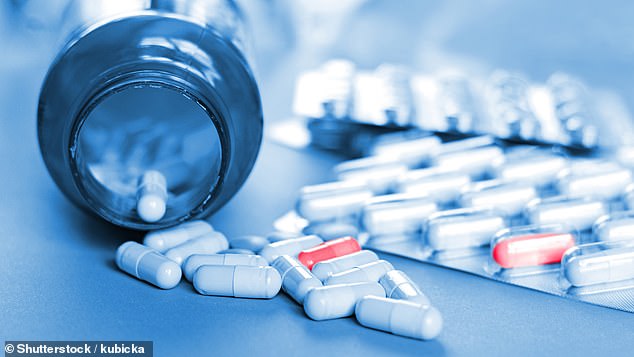We’re returning to an age when a cut, childbirth or an STI could be fatal, writes surgeon MR DAVID SWEETNAM
Global outbreaks of disease can – as we have seen with the Covid pandemic – happen seemingly overnight. But they can also resemble a car crash in slow motion, which is how I describe the growing threat of antibiotic resistance.
And right now we’re spiraling out of control.
Take sexually transmitted infections (STDs). Diseases like syphilis and gonorrhea were once death sentences, but with the introduction of penicillin as a drug in the 1940s, they became easy to treat.
Today, sexual health clinics are filled with patients suffering from drug-resistant STDs caused by overuse of antibiotics.
By 2040 we may see people in Britain dying from these infections. The same goes for common insects picked up during childbirth.
Before antibiotics, babies and mothers routinely died during or shortly after childbirth. There will be a return to this era – there is no doubt about it, writes Mr David Sweetnam

By 2040 we could see people dying from infections in Britain as bacteria can become antibiotic resistant

Diseases such as syphilis (pictured) and gonorrhea were once death sentences, but with the introduction of penicillin as a drug in the 1940s they became easy to treat
Before antibiotics, babies and mothers routinely died during or shortly after childbirth. There will be a return to this era – there is no doubt about it. It’s already happening in Africa and South Asia, where drug-resistant bugs are more common and access to rarer, more expensive antibiotics is limited.
We live in a global village and NHS patients will eventually suffer the same fate.
The troubling truth is that not nearly enough research is being done to find new alternatives.
Governments, pharmaceutical companies and research centers such as the INEOS Oxford Institute are working together to develop new antibiotics, but the reality is that it takes more than a decade to develop just one new drug that is safe for human consumption.
We also need to limit the number of antibiotics used in agriculture. Currently, 75 percent of all human antibiotics are given to livestock to keep them healthy.
But this will only give us some breathing space to find longer-term solutions. Antibiotic resistance is inevitable and we need a new way to protect ourselves from bacteria.
With the help of artificial intelligence and futuristic technology, such as genetically engineered viruses that can attack disease-causing bacteria, we can fight back.
The need for new treatments is clear. Unless drastic measures are taken, we face a return to the pre-antibiotic era, where an infected blister, a small cut or a urinary tract infection can be fatal.
